(23095 products available)


















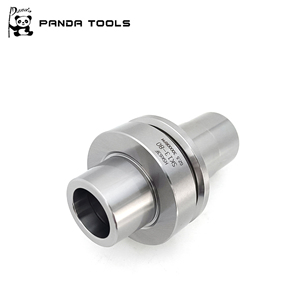










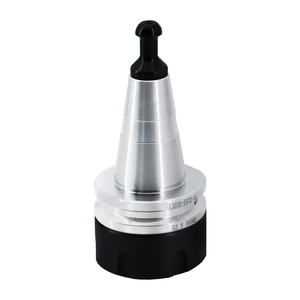




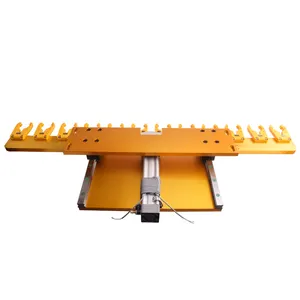





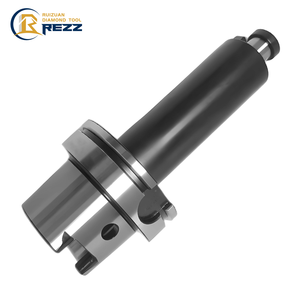




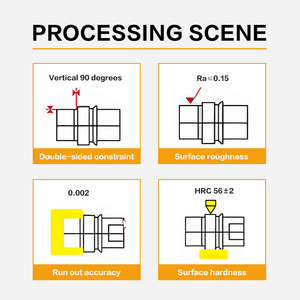


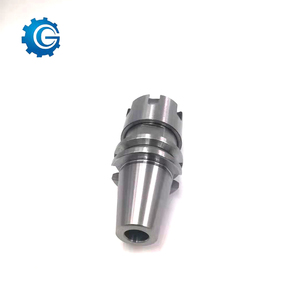

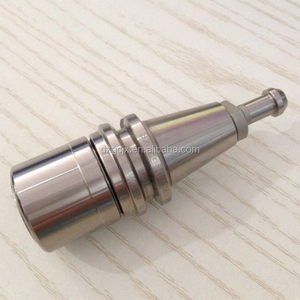





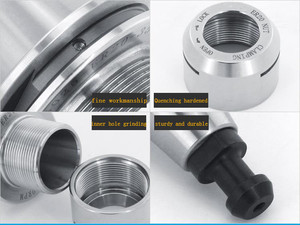





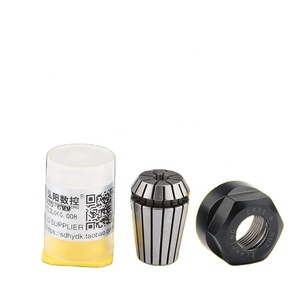

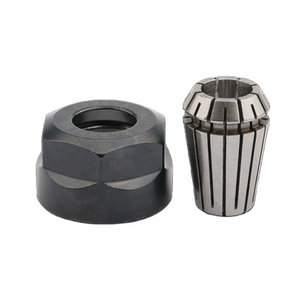





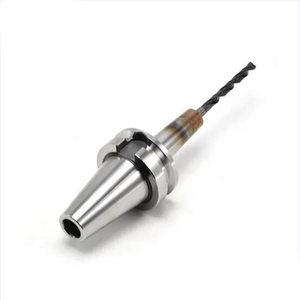




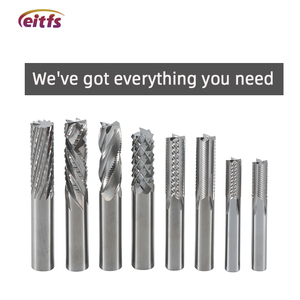


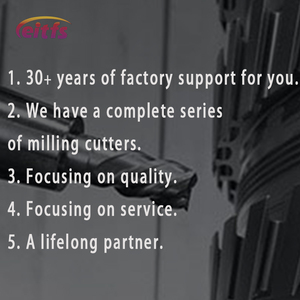















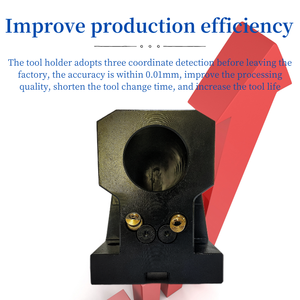

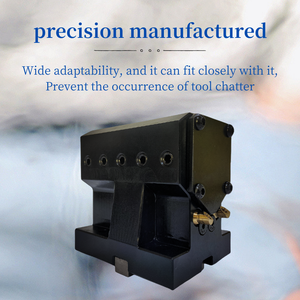













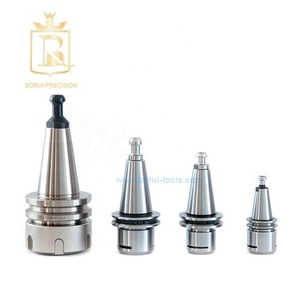

















































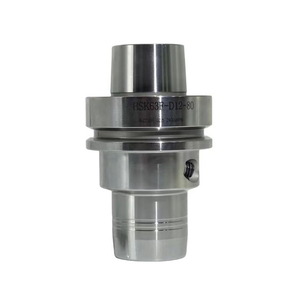
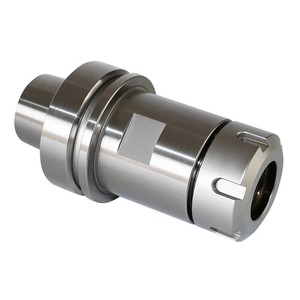

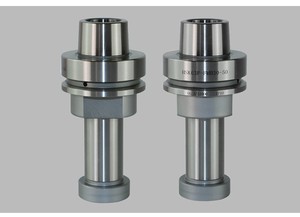










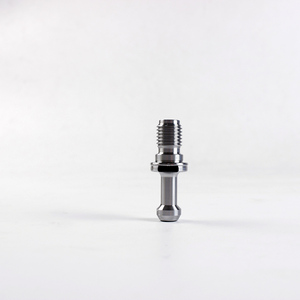







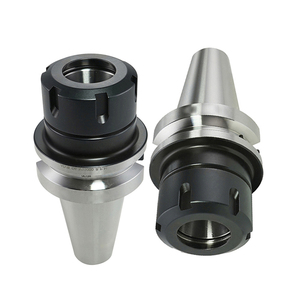

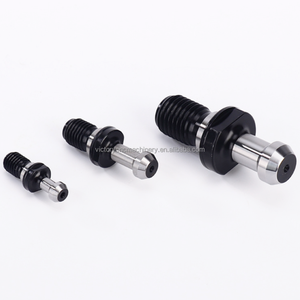
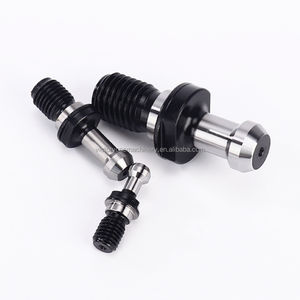





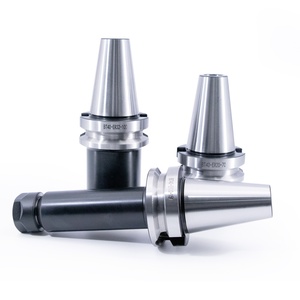









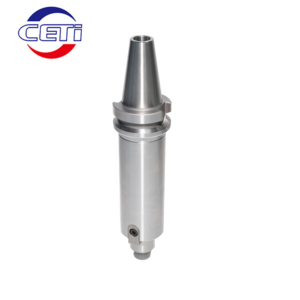


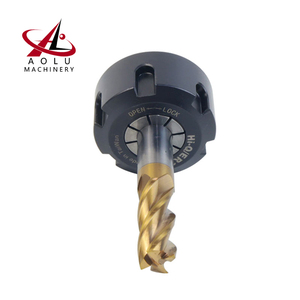


















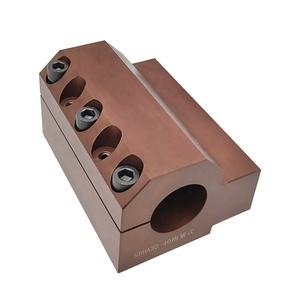



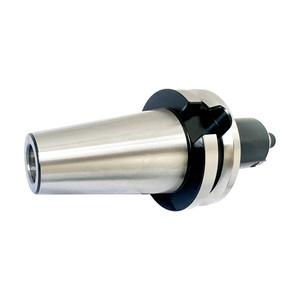
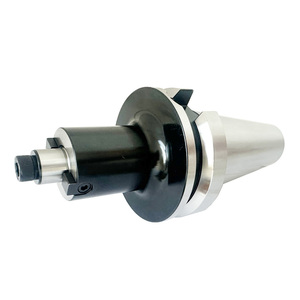


The main function of a tool holder CNC milling machine is to connect the tool to the spindle of the CNC milling machine, and it is also responsible for the precise clamping of the cutting tool. The tool holder directly affects the performance, accuracy, and stability of the CNC milling machine. There are many types of tool holders for CNC milling machines, which are usually distinguished by their tapers.
CAT (V-flange) and BT (Hollow shank) are the two most popular types of CNC tool holders. They are designed to be inserted into the spindle of the milling machine and are secured by a retention knob. The CAT tool holder is suitable for heavy cutting and high-speed applications, while the BT tool holder is more commonly used in high-speed milling. They are both designed to provide good rigidity and high accuracy. They are available in different sizes (CAT 40, CAT 50, BT 30, etc.) to match the corresponding CNC milling machine.
The HSK tool holder is a relatively new type of tool holder for CNC milling machines, which is designed to provide better accuracy, balance, and rigidity. HSK tool holders use a tapered shank that is pulled back into the spindle by a series of grippers. This design can provide more contact and better gripping force, thus improving the transmission of power and torque. HSK tool holders can also provide better balance at high speeds, making them ideal for high-speed cutting and milling.
R8 is a popular tool holder for CNC milling machines, commonly found in small to medium-sized mills. It is a versatile and cost-effective option. The R8 tool holder is directly inserted into the spindle of the mill and is secured by a drawbar. The design is simple and easy to use. It is a popular choice for manual and small CNC mills. R8 tool holders can accommodate a variety of tools and attachments, making them ideal for a wide range of milling applications.
Specification
There are various types of tool holders for CNC milling machines, such as BT tool holders, HSK tool holders, CAT tool holders, etc. Each type has its specific design and performance.
The tool holder's size is usually represented by its taper size and shank size. Different types of tool holders may have various taper and shank sizes to accommodate different tools.
The clamping mechanism of the tool holder is responsible for securing the tool in place. The clamping mechanism may include collets, nuts, etc., and it may vary depending on the tool holder's type.
Accuracy refers to the tool holder's ability to maintain consistent and precise tool positioning. This includes radial runout, axial runout, and other factors. The accuracy of the tool holder directly affects the accuracy of the CNC milling machine's machining.
The load capacity is the maximum weight that the tool holder can support. It affects the stability and performance of the CNC milling machine during operation.
Maintenance
Regular maintenance of the tool holder helps ensure optimal performance and longevity of the CNC milling machine.
Regularly clean the tool holder to remove dust, debris, and oil buildup. This can prevent contamination and ensure reliable clamping.
Periodically inspect the tool holder for signs of wear or damage. Check the clamping mechanism, such as collets and nuts, for any deformation or abrasion. Look for any loose components or abnormal sounds during operation.
If the tool holder has moving parts, apply lubricant to ensure smooth operation. Check if the lubricant is dry or dirty and replace it in time.
If the tool holder is not in use, store it in a clean and dry environment. Avoid exposure to moisture or corrosive substances. Consider using protective covers or boxes to prevent damage.
For complex maintenance tasks or repairs, it is recommended to seek professional services. Regularly scheduled maintenance by a qualified technician is essential to ensure the tool holder's long-term performance and safety.
Tool holders for CNC milling machines are versatile and are used in various industries and applications. Here are some common applications and scenarios for the use of tool holders for CNC machines.
Tool holders for CNC milling machines are used to make components for vehicles. These components are made from metal, such as aluminum, that is difficult to shape or cut. They need to be strong, durable, and precise to ensure the safety and performance of the vehicle. The tool holders are used with cutting tools to get the exact dimensions and shapes of the vehicle parts. Some of the parts made in the automotive industry include engine parts, brake components, and transmission parts.
The aerospace industry manufactures aircraft, spacecraft, and satellites. These equipment and machines need to be lightweight and strong to be able to function properly. Tool holders for CNC milling machines are used to make aerospace components, such as fuselages, wings, and turbine parts. They machine different materials, including alloys, composites, and titanium, and create complex shapes and configurations with precise tolerances required for these parts to work well. The tool holders are often used with cutting tools such as drills and end mills to make these components.
The medical industry uses CNC machines and tool holders to make medical devices and instruments. These include prosthetics, orthopedic implants, and surgical instruments. The tool holders are used with cutting tools, such as drills, to make the precise and intricate components of these medical devices. Medical devices and instruments need to be accurate to ensure the safety of patients and improve the performance of healthcare workers.
Tool and die making involves the production of tools, dies, and molds used in metalworking, plastic injection molding, and other manufacturing processes. Tool holders for CNC milling machines are used to machine these tools with high precision. They are used to create punches, dies, and injection molds that are used in other manufacturing industries. The tool holders are used with cutting tools, such as end mills and drills, to make the parts with high accuracy and repeatability.
Business buyers should consider the following factors when choosing a tool holder for a CNC milling machine:
It is important to ensure the tool holder is compatible with the specific model and spindle taper of the CNC milling machine being used. Refer to the machine's specifications to determine the appropriate size and type of tool holder that can be used.
Consider the different types of tool holders available, such as collet chucks, end mill holders, or hydraulic tool holders. Choose a type that is suitable for the cutting tools and workpieces used in the business's machining applications.
It is important to choose a tool holder that provides high levels of accuracy and repeatability. Consider factors such as the holder's clamping mechanism and design, which affect its ability to securely hold tools and maintain precise positioning during machining operations.
Consider the tool holder's load capacity, which is the maximum weight it can support. Ensure the chosen holder can accommodate the size and weight of the cutting tools used in the business's machining processes. Overloading a tool holder can lead to poor performance and premature wear.
Consider the construction and material of the tool holder. Choose a holder that is well-constructed and made of high-quality materials. Opt for holders made of materials, such as hardened steel or aluminum alloys, that can withstand the demands of machining operations and provide longevity.
Consider the cost and value of the tool holder. While it is important to stay within budget, it is equally important to prioritize performance and reliability. Choose a holder that offers a balance of cost, quality, and features that meets the business's machining needs.
Q1 What is a tool holder on a milling machine?
A1 A tool holder is a part that holds and positions cutting tools in a milling machine. It allows the cutting tool to be fastened securely to the spindle. The tool holder then allows the cutting tool to be easily swapped out when the machine needs different types of cutting tools to be used.
Q2 What is the difference between a tool holder and collet?
A2 A collet holder is a subtype of tool holder that uses a collet to securely hold the cutting tool. Tool holders can use collets, chucks, or other clamping mechanisms to hold the cutting tool in place. The collet itself is a clamp-like object. The collet is a smaller part of the tool holder that actually grips the cutting tool. The collet is typically spring-loaded and can be tightened or loosened during the milling process.
Q3 What is the difference between an end mill holder and a collet?
A3 End mill holders differ from collets in that they are designed to hold only end mills. End mill holders are usually larger and can hold wider and more durable tools like end mills. End mills are cutting tools used in milling machines to cut horizontally into workpieces. An end mill holder is often made of metal, which is known for its strength and durability.